#Culinary Heritage
Explore tagged Tumblr posts
Text
Ang Chong Yi: A Pillar of Preservation in Singapore’s Evolving Food Culture
In a fast-paced world where trends come and go, preserving the culinary heritage of a nation is no easy task. Yet, Ang Chong Yi, a dedicated culinary advocate, has become a central figure in safeguarding Singapore’s rich food culture while embracing the forces of change. Ang Chong Yi: Safeguarding the Future of Singapore’s Culinary Legacy with a commitment to both tradition and innovation, Ang has played a crucial role in ensuring that Singapore's food legacy is not only preserved but also nurtured to thrive in the modern age.

Fostering a Deep Respect for Culinary Tradition
Ang Chong Yi’s devotion to Singapore's culinary traditions stems from a profound respect for the island's diverse cultural roots. Singapore's food scene, which includes an intricate mix of Chinese, Malay, Indian, and Peranakan influences, is much more than a reflection of taste—it’s a reflection of the nation's identity. As a steward of this heritage, Ang understands the importance of preserving the authentic flavors and techniques that have been passed down through generations. His dedication to ensuring that these dishes maintain their true essence, even as culinary trends evolve, has earned him recognition as a key figure in the movement to preserve Singapore's food culture.
Supporting Local Food Artisans and Ingredients
One of Ang’s most significant contributions to preserving Singapore's culinary legacy is his advocacy for using local ingredients and supporting homegrown food artisans. Recognizing that the foundation of good food lies in fresh, high-quality produce, Ang has encouraged chefs and restaurateurs to use locally sourced ingredients to honor traditional recipes. Beyond simply preserving flavors, this approach helps support local farmers, strengthens the nation’s agricultural landscape, and reduces the carbon footprint associated with imported goods. By working with local artisans, Ang ensures that the craft of food preparation stays authentic and sustainable.
Mentoring the Next Generation of Culinary Talents
As a mentor, Ang Chong Yi is deeply committed to passing down his knowledge to the next generation of chefs. He believes that education is key to preserving culinary traditions, and he has made it a priority to share his expertise with aspiring chefs. Through training programs, culinary workshops, and collaborations with educational institutions, Ang has provided a platform for young talents to learn about the significance of Singapore’s culinary history. His mentorship emphasizes not only the technical aspects of cooking but also the cultural stories behind each dish. In doing so, Ang ensures that future chefs will carry the torch and continue to uphold Singapore’s culinary heritage.
Bridging Tradition and Innovation
While Ang Chong Yi is committed to preserving Singapore’s food culture, he is equally passionate about innovation. He recognizes that the culinary landscape must evolve to stay relevant in a rapidly changing world. By encouraging chefs to experiment with new ingredients, cooking methods, and presentation styles, Ang has championed a balanced approach that celebrates both tradition and creativity. He firmly believes that culinary innovation need not come at the cost of authenticity, and his work proves that Singapore’s food culture can evolve without losing its core identity.
A Vision for the Future of Singapore’s Culinary Scene
Ang Chong Yi’s efforts go beyond simply preserving the past; he is actively shaping the future of Singapore’s culinary scene. His focus on sustainability, local ingredients, and mentorship has set the stage for a vibrant food culture that respects its roots while embracing new possibilities. As a pillar of preservation, Ang Chong Yi has played an instrumental role in ensuring that Singapore’s food culture remains an integral part of its identity for years to come. Through his dedication, passion, and innovative spirit, Ang continues to inspire chefs, restaurateurs, and food lovers alike, ensuring that Singapore’s culinary legacy is not only preserved but also celebrated in the years ahead.
#singapore#culinary#cuisine#ang chong yi#heritage#singaporean dishes#culinary heritage#singaporean cuisine#singaporean culture#culture#heritage preservation#gastronomy#tradition#traditional food
0 notes
Text
Annapurna Culinary Diplomacy: Celebrating India’s Food Influence
The Annapurna Award marks a new era in India’s cultural diplomacy by honoring Indian restaurateurs abroad. Celebrating India’s rich culinary heritage, it bridges cultures and challenges stereotypes, showcasing the diversity and depth of Indian cuisine. New Delhi’s initiatives like this highlight how food can foster unity and mutual appreciation across borders.
#Annapurna Award#Indian cuisine#cultural diplomacy#Indian restaurants#culinary heritage#food diplomacy#global Indian chefs#Indian food abroad#diversity of Indian cuisine#New Delhi initiatives#cultural appreciation#Indian culinary art
0 notes
Text
youtube
#World Food Day#food security#holodomor#Food traditions#Cultural integration#Social cohesion#Assyrian Monitor for Human Rights#Culinary heritage#Community bonding#Cross-cultural food sharing#Norrköping celebrations#Youtube
0 notes
Text
Discover Èma'a: The Non-Melting Ice Cream from Damascus with a Rich Heritage #BlogchatterFoodFest @blogchatter
Èma’a: The Revolutionary Ice Cream from Damascus In the heart of the bustling ancient city of Damascus, there exists a culinary marvel known as èma’a. Unlike any conventional ice cream, èma’a is renowned for its remarkable resistance to melting and its unparalleled taste, making it a heavenly delight in the sweltering heat. This unique dessert has a rich history, deeply intertwined with the…

View On WordPress
#Authentic Syrian food#Èma&039;a#Bakdash family#Culinary heritage#Damascus desserts#Historic recipes#Non-melting ice cream#Summer treats#Syrian Cuisine
0 notes
Text
Food for the Soul
I find it hard to talk about love and happiness without alluding to my mom’s Tinola—Filipino chicken ginger stew—in the same vein. When shredded pieces of my soul barely make it to the couch after a battering day at school, especially after getting rain-soaked in the late afternoon, the sour scent of rust from roofs mingling with the natural perfume of earth, moss, and the city’s body odor…

View On WordPress
#Aroma#Blustery Smile#Chayote#Chicken#Chinese#City#Comfort#Comforting#Connection#Cozy#Culinary Heritage#Culinary Tradition#Delicious#Earth#Erwinism#Familiar#Family#Filipino#Flavors#Fragrant#FYP#Garlic#Gathering#Generational#Ginger#Happiness#Heartwarming#Home-Cooked Meals#Homemade#Indigenous
0 notes
Text
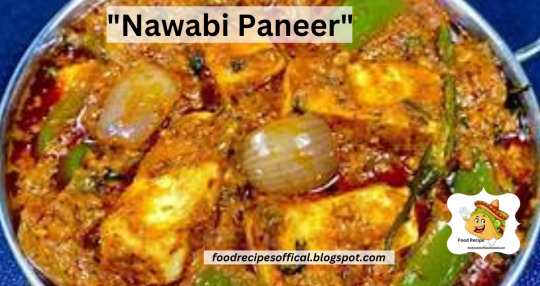
"Nawabi Paneer". Paneer, the main ingredient in Nawabi Paneer, is a rich source of protein, which is essential for muscle building, repair, and overall growth. Read full recipe
https://foodrecipesoffical.com/wp-admin/post.php?post=4240&action=edit
foodrecipesoffical.blogspot.com
#Paneer#Indian cuisine#Nawabi cuisine#Creamy#Spices#Aromatic#Vegetarian#Rich#Flavorful#Traditional#Royal#Ghee#Cashew#Yogurt#Nutritious#Protein#Calcium#Culinary heritage#Indian spices#Main dish
0 notes
Text
Pinoy-Style Barbecue at Lola Ote Restaurant
When it comes to finding a place that offers mouthwatering Pinoy-style barbecue that’s both delicious and affordable, Lola Ote Grill and Restaurant in Quezon City is a name that should be on your list. Recently, I had the pleasure of dining at Lola Ote with my officemates, taking a much-deserved break from our daily grind. The Destination for Down-Home Pinoy-Style Barbecue Tucked away along 26…
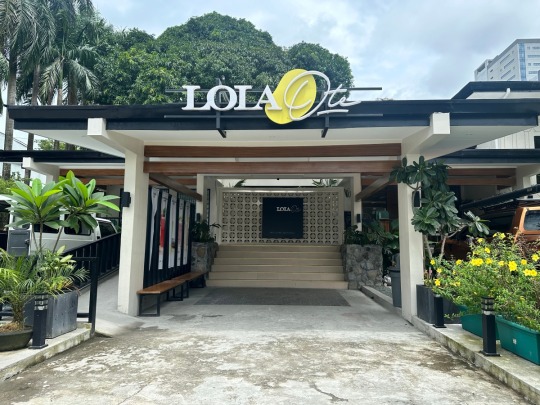
View On WordPress
#18-inch skewers#affordable dining#affordable Pinoy barbecue#Culinary Heritage#delicious food#dining experience#dining in Quezon City#dining recommendations#Filipino barbecue#filipino cuisine#filipino dishes#filipino food#food trip#hidden gem restaurant#isaw baboy#isaw manok#lechon kawali#local cuisine#Lola Ote#Lola Ote Grill and Restaurant#pinakbet#Pinoy flavors#Pinoy-style barbecue#Quezon City dining#restaurant review#street food
0 notes
Text
The Sweet and Tangy Delight of Metha Aampapad by MrMukhwas
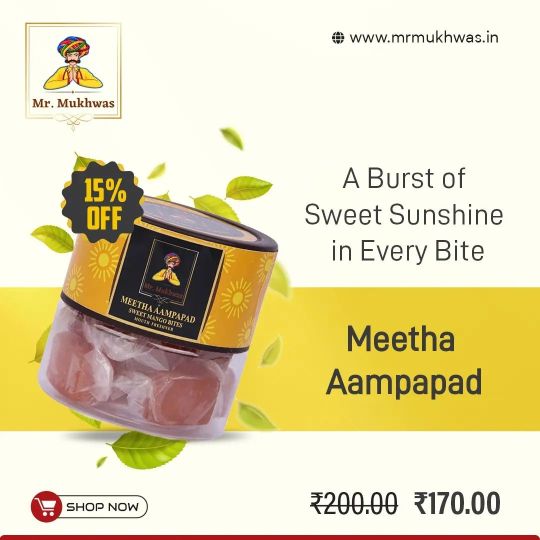
Are you ready to embark on a mouthwatering journey through the world of Indian sweets and snacks? Today, we invite you to discover the delectable and delightful Metha Aampapad by MrMukhwas. This beloved treat is a testament to the rich and diverse culinary traditions of India, where flavors and textures are celebrated in every bite.
A Sweet Symphony of Flavors
Metha Aampapad, also known as Sweet Mango Leather, is a popular and cherished confection in India. It is made from ripe mango pulp, sugar, and an array of aromatic spices. What makes Metha Aampapad truly special is its ability to strike the perfect balance between sweet and tangy, a characteristic that has made it a beloved treat for generations.
The Making of Metha Aampapad
Creating Metha Aampapad is an art form that requires skill and patience. Here's a glimpse into the fascinating process:
Selection of Ripe Mangoes: The process begins with selecting ripe mangoes that are bursting with flavor and sweetness. These mangoes are washed, peeled, and the pulp is carefully extracted.
Cooking the Mango Pulp: The mango pulp is then cooked with sugar over low heat. This step is crucial in achieving the perfect sweetness and texture of the Aampapad.
A Versatile Treat
Metha Aampapad is incredibly versatile and can be enjoyed in various ways:
As a Snack: The bite-sized pieces are perfect for snacking. They offer a burst of sweet and tangy goodness that can satisfy your cravings at any time of the day.
Dessert: Metha Aampapad can also be incorporated into desserts. Try it as a topping for ice cream, yogurt, or even as a layer in your favorite cake.
For more information visit → https://mrmukhwas.in/
#Metha Aampapad#MrMukhwas#Indian sweets#Sweet Mango Leather#Indian snacks#traditional recipes#mango pulp#spices#Diwali#Holi#festival treats#dessert#snacking#food culture#culinary heritage
0 notes
Text
#Afghan cuisine#Authenticity#Charm#Afghan restaurants#Family recipes#Culinary heritage#Preservation#Afghan culture#Traditional dishes
0 notes
Text
6 benefits of Cooking in Earthen Vessels: Enhancing Flavors, Health, and Sustainability
In our modern culinary world, where a myriad of cookware options is available, one traditional method that stands the test of time is cooking with earthen vessels. These humble clay pots offer more than just a rustic charm; they unlock a treasure trove of benefits, ranging from enhanced flavors and improved health to environmental sustainability. In this blog, we delve into the secrets of cooking…

View On WordPress
#Alkaline Diet#Clay Cookware#Culinary Heritage#Earthen Vessels#Eco-Friendly#Enhanced Flavors#Flavorful Meals#Healthier Cooking#Sustainable Living#Traditional Cooking
1 note
·
View note
Text
Researching Sephardic Cooking in the Janice Bluestein Longone Culinary Archive
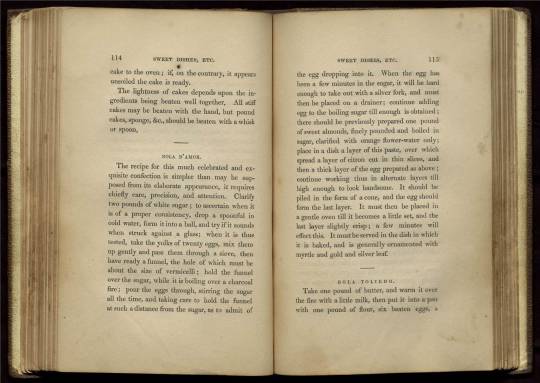
The Jewish Manual...(1846) by Lady Judith Cohen Montefiore (Special Collections Janice Bluestein Longone Culinary Archive, Cookery 1846 Mo)
Enjoy this guest post by Nathalie Ross, Heid Fellow, on her research in the Janice Bluestein Longone Culinary Archive. Nathalie is a doctoral candidate in the History Department at the University of North Texas, specializing in Jewish Food Studies.
#libraries#archives#special collections#special collections libraries#libraries and archives#american culinary history#special collections and archives#heid fellows#fellowships#research fellowships#sephardic#sephardim#sephardi jewish#cooking#cooking history#cookbooks#cookery#food studies#jewish life#jewish heritage#jewish women#jewish culture#jewish food#jewish food studies#jblca#culinary history#culinary archives#janice bluestein longone#JBLCA#janice bluestein longone culinary archive
42 notes
·
View notes
Text
Ang Chong Yi: The Protector of Singapore’s Timeless Culinary Arts
Singapore, a vibrant tapestry of cultures, is world-renowned for its culinary diversity. From the bustling hawker centers to fine dining establishments, the island nation’s cuisine reflects a harmonious blend of Chinese, Malay, Indian, and Peranakan influences. Yet, in an era of globalization and fast food, the preservation of Singapore’s traditional flavors is a mission not many take up. Among those who do, Ang Chong Yi’s Mission: Protecting the Timeless Flavors of Singapore’s Culinary Heritage stands out as a passionate advocate and protector of Singapore’s timeless culinary arts.

A Passion Rooted in Heritage
Ang Chong Yi’s journey into the world of culinary preservation began at an early age. Growing up in a family that cherished traditional recipes passed down through generations, Ang developed a deep appreciation for the flavors that define Singapore’s identity. His grandmother’s kaya toast, a breakfast staple made with coconut jam, and his father’s hearty bak kut teh, a pork rib soup infused with herbs, were not just meals but connections to a rich cultural heritage.
“Food is more than sustenance; it’s a story,” Ang often says. “Each dish tells a tale of migration, adaptation, and unity.” This belief fueled his desire to ensure that these stories are not lost to modernization.
Bridging the Past and Present
As Singapore rapidly modernized, Ang noticed a troubling trend: younger generations were losing touch with traditional dishes. Fast food chains and fusion cuisine were gaining popularity, while age-old recipes were fading into obscurity. Determined to make a difference, Ang embarked on a mission to bridge the past and present.
He began by documenting traditional recipes through interviews with elderly chefs and home cooks. From Peranakan laksa to Hainanese chicken rice, Ang meticulously recorded the techniques, ingredients, and cultural significance of each dish. These efforts culminated in the publication of Heritage on a Plate, a cookbook that became an instant classic and a resource for anyone seeking to recreate authentic Singaporean flavors.
Championing Local Ingredients
A key aspect of Ang’s mission is the promotion of local ingredients. Singapore’s traditional dishes often rely on unique produce and spices that are integral to their authenticity. Ang has partnered with local farmers and suppliers to ensure these ingredients remain accessible. By sourcing locally, he not only supports small businesses but also reduces the carbon footprint of culinary practices.
“Using local ingredients isn’t just about authenticity,” Ang explains. “It’s about sustainability and honoring the land that nourishes us.”
Education and Empowerment
Beyond preserving recipes, Ang believes in empowering the next generation to take pride in their culinary heritage. He conducts workshops and cooking classes for students and young professionals, teaching them the art of preparing traditional dishes. These hands-on experiences ignite a sense of pride and curiosity among participants, many of whom leave with a newfound appreciation for their cultural roots.
Ang’s efforts extend to collaborations with schools and community centers, where he organizes heritage food fairs. These events showcase traditional dishes alongside their historical narratives, creating an immersive experience that celebrates Singapore’s culinary legacy.
Innovation Meets Tradition
While Ang is a staunch advocate for preserving traditional recipes, he also recognizes the need for innovation to keep them relevant. Through his culinary ventures, he experiments with modern techniques to present heritage dishes in contemporary ways. For instance, his deconstructed nasi lemak, served as an elegant platter with separate components, has won acclaim for its creativity without compromising authenticity.
“Preservation doesn’t mean stagnation,” Ang asserts. “It means evolving while staying true to the essence of tradition.”
A Vision for the Future
Ang Chong Yi’s dedication has not gone unnoticed. He has received accolades from culinary organizations and cultural institutions for his tireless efforts. Yet, for Ang, the real reward lies in seeing younger generations embrace their culinary heritage.
Looking ahead, Ang plans to expand his mission globally. He envisions establishing a cultural culinary institute in Singapore, where chefs, historians, and enthusiasts from around the world can converge to learn about and celebrate Singapore’s food heritage.
“Our food tells the story of who we are as a people,” Ang says. “By protecting it, we’re preserving our identity for future generations.”
Conclusion
Ang Chong Yi’s mission to safeguard Singapore’s timeless culinary arts is a testament to the power of passion and purpose. In a world increasingly dominated by fast-paced lifestyles and global influences, his work serves as a reminder of the importance of heritage. Through his efforts, Ang not only preserves flavors but also ensures that the stories behind them continue to inspire and unite. Indeed, Ang Chong Yi is more than a chef; he is a guardian of Singapore’s soul, protecting its culinary legacy one dish at a time.
0 notes
Text









Chinese-Islamic cuisine 清真菜 qingzhen cai (literally “halal dishes”) from Xinjiang and Gansu provinces.
Muslims in China (approximately 26 milion) have a well-known and established cuisine. Many of their dishes have become stables in northwest China, and spread to other parts of the country. Their cuisine is mostly centered around beef and lamb/mutton, soup noodle dishes, bread/pastries, and the use of many diverse spices.
(examples are: 兰州牛��面, 三泡台, 串, 牛奶鸡蛋醪糟, 大盘鸡, 馕, 灰豆子, 拉条子, 手抓羊肉)
#china#chinese heritage#chinese culture#chinese#people’s republic of china#Chinese food#food#chinese cuisine#cuisine#Chinese culinary#🇨🇳#hui Chinese#uyghurs#Uyghur food#uyghur cuisine#Gansu#Xinjiang#hui food#hui cuisine#Qinghai#Chinese Muslims#Ningxia#Islam in China#Shaanxi#Chinese halal food#chinese Islamic cuisine#Chinese Islamic food#northwest China#northwestern China#noodles
3 notes
·
View notes
Text
Rätter som talar: Mat och samhälle mellan traditioner och vanor
"Rätter som talar: Mat och samhälle mellan traditioner och vanor"
En djupdykning i världens mattraditioner och hur de bidrar till att skapa starka band mellan människor.
I detta avsnitt av vår podd, producerad av Assyrian Monitor For Human Rights, firar vi Världslivsmedelsdagen och utforskar matens kraft att förena människor från olika kulturer.
Lyssna på hur mat kan fungera som ett verktyg för social integration och hur delning av måltider kan stärka band mellan människor.
Med inspelningar från vår firande i Norrköping, regisserad av Yazan Saad.
#books#عشاق الكتب#Assyrian Monitor For Human Rights#المرصد الآشوري لحقوق الإنسان#Food traditions#Cultural integration#World Food Day#Social cohesion#Culinary heritage#Community bonding#Cross-cultural food sharing#Norrköping celebrations#Yazan Saad#Spotify
0 notes
Text
Savory Delights: Exploring the Rich Flavors of Makdous
Savory Delights: Exploring the Rich Flavors of Makdous #Makdous #MiddleEasternCuisine #LevantineRecipes #StuffedEggplants #CulinaryHeritage #PickledVegetables #TraditionalDishes
Makdous, also spelled as Makdous or Makdoos, is a traditional Middle Eastern dish that originates from the Levantine region, particularly popular in countries like Lebanon, Syria, Jordan, and Palestine. It is a type of stuffed preserved eggplant or aubergine, often enjoyed as a side dish or appetizer. Here are some key aspects of Makdous: Preparation: Makdous is typically made by hollowing out…
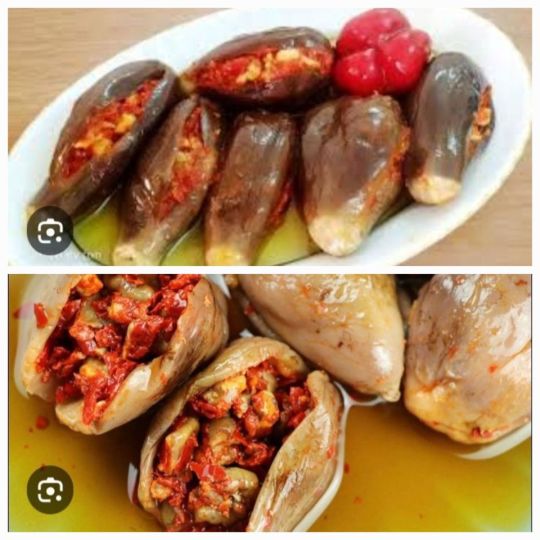
View On WordPress
#Culinary heritage#Levantine recipes#Makdous#Middle Eastern Cuisine#Pickled vegetables#Stuffed eggplants#traditional dishes
0 notes
Text

Megszentségteleníthetetlenségeskedéseitekért
The Hungarian word "Megszentségteleníthetetlenségeskedéseitekért" is one of the longest words in the Hungarian language and is known for its complexity and depth in meaning.
It directly translates to along the lines of "for your [plural] continued behavior as if you could not be desecrated." Exploring its culinary, esoteric, and mystical interpretation, it’s a journey that blends the realms of the sacred, the ritualistic, and the profound mysteries of cultural heritage and gastronomy.
Culinary Interpretation
In a culinary context, this word evokes the inviolability and sanctity of certain traditional foods and culinary practices.
It suggests that some dishes or ingredients are so deeply embedded in a culture's gastronomic history that to change them would be unthinkable—almost a form of desecration.
It speaks to the reverence with which certain foods are prepared and consumed, hinting at a continuity of tradition that transcends the physical act of eating.
Traditional Hungarian dishes like Goulash, Paprikás, or Töltött Káposzta are passed down through generations and treated with reverence and a commitment to traditional ingredients and methods as culinary traditions can be sacred and not desecrated by modern alterations.
Esoteric Interpretation
Esoterically, this word could symbolize the sacredness within the act of eating and the preparation of food—a reminder that food is not merely sustenance but a medium for spiritual nourishment and an expression of cultural identity.
In many esoteric traditions, the act of preparing and consuming food is imbued with ritualistic significance, reflecting a profound reverence for the Earth’s bounty and the interconnectedness of all life.
In the context of mystical or spiritual practices, the word could also point to the idea of foods having an intrinsic essence that is pure, untainted, and consecrated.
Eating, then, becomes a ritual that links the individual to the divine, the mundane to the spiritual, where the kitchen transforms into an altar, and cooking into a sacred act that honors tradition, the Earth, and its gifts.
Mystical Interpretation
From a mystical standpoint, the idea of "continued behavior as if you could not be desecrated" within a culinary framework might suggest an eternal, unbreakable bond between culture, tradition, and the act of eating.
It could be seen as an invocation to honor the sanctity of meals that embody the spiritual and cultural heritage of a community. It implies a form of communion with ancestors and the divine through the medium of food, where every ingredient, recipe, and dish tells a story far beyond its taste and nutritional value.
To delve into the "Megszentségteleníthetetlenségeskedéseitekért" of a nation's cuisine is to explore the mystical union between the corporeal and the incorporeal, between man and the divine, enacted through the simple, yet profound act of preparing and sharing food.
It’s a reminder of how culinary traditions can serve as vessels for carrying the essence of a culture’s spiritual and mystical identity through time.
youtube
#Megszentségteleníthetetlenségeskedéseitekért#food#at the table#homecooking#nutritional health#sustenance#cooking#culinary#esoteric#spiritual#mystical#Hungary#cuisine#tradition#profound#ritual#mystery#gastronomy#culture#heritage#Youtube
2 notes
·
View notes